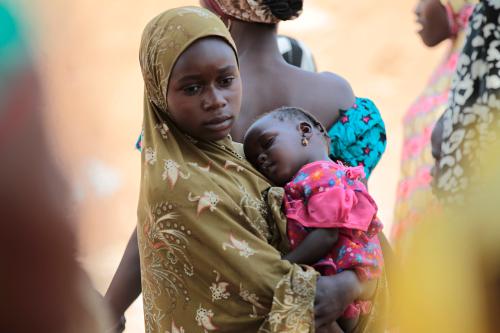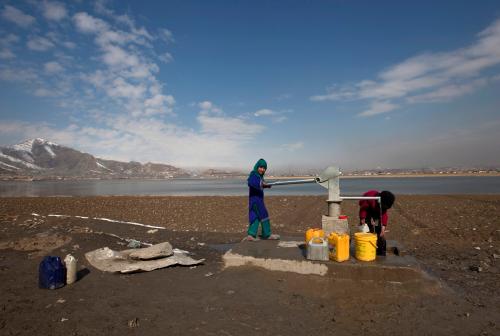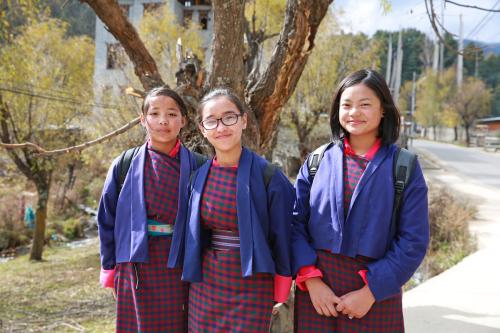This blog is the third in a four-part series related to a new paper on girls’ education and climate change, including an overview of the research, reproductive rights, fostering climate participation and leadership, and life skills for a green economy.
In early June, President Trump’s announcement of the United States’ intent to withdraw from the Paris climate accord puzzled the world. Adopted in 2015 by 195 nations with 147 ratifications, the Paris Agreement was a truly unprecedented landmark. While imperfect, it represented a new era of climate action, one that garnered buy-in from developing and developed countries alike, was ambitious but forward-looking, and was both legally binding and transparent. The U.S. withdrawal has threatened to weaken this policy milestone, not only creating a geopolitical climate leadership vacuum, but also by unraveling decades of global political momentum built around high-level climate action.
But, while media attention continues to fixate on the high-level political fallout of the 3-year process of the U.S.’s withdrawal, the reality remains that we must look elsewhere, preferably closer to the grassroots, to sustain the climate action ecosystem and to build against any further damage to come. As other Brookings fellows have pointed out, it’s time to look to other non-state actors who can make a concerted effort toward combating climate change. Our new report, Three Platforms for Girls’ Education in Climate Strategies, draws attention to a specific initiative that non-state actors can invest in now to make a long-term difference: create a global pipeline of girls to women climate leaders.
Indeed, research shows that female leaders are especially effective in conservation efforts. For example, in a study of 130 countries, those with a higher number of women in parliament were more likely to ratify environmental treaties, signaling higher state support for environmental protection. Another study showed that across 90 countries, those with higher numbers of women in parliament tended to protect land areas at higher rates.
In our own calculations using the University of Notre Dame Global Adaptation Initiative (ND-GAIN) Country Index and data from the Women’s Environment and Development Organization’s (WEDO) Gender Climate Tracker on women’s participation in climate diplomacy, results suggest that countries with higher rates of women in climate leadership and increased schooling for girls fare better in terms of their country’s overall vulnerability to climate disasters. While many more variables are needed to paint a full picture of this relationship, interesting correlations emerged: for every additional female delegate representing a country in a major climate decisionmaking body, a country can expect a 0.03 point gain in its index score, compared to only a 0.008 point gain for any additional delegate, regardless of that person’s gender. Since 2008, the gains have become greater. Every 1 percent increase in the percentage of female delegates in official government delegations is associated with a 0.43 point gain on the ND-GAIN Index.
Despite these promising correlations, studies show that women have not been included in environmental processes, making up dismal numbers of represented leaders at key climate decisionmaking tables. In 6 out of 9 decisionmaking processes, for instance, women represented less than one-third of all decisionmakers. And in 2015, women made up only 24 percent of the 173 delegates (or focal points) to the U.N. Forum on Forests, 12 percent of the heads of 881 national environmental sector ministries from 193 U.N. member states, and 4 percent of 92 national member committee chairs on the World Energy Council.
One explanation for this bottleneck is that efforts to bolster women in leadership, like the International Gender Champions Network and the Women Political Leaders Global Forum, have not made substantial links to the climate sector. Outside of the Women Delegates Fund, part of WEDO, organizations and networks focused on building gender equality in leadership have targeted their efforts at nurturing women into political and organizational leadership roles more broadly.
Furthermore, girls’ education organizations are a critical but overlooked actor within the climate action ecosystem, which has gravitated toward the realm of adult women’s education and empowerment. While adult women are critical to accelerating progress, continued acceleration can only be achieved if efforts are simultaneously targeted at girls, especially their development of transformative life skills like negotiation, communication, critical thinking, problem identification, and problem solving. Our analysis suggests that every additional year of schooling for girls is positively correlated with higher numbers and higher percentages of women participants in official government delegations to United Nations Framework Convention on Climate Change (UNFCCC) meetings and bodies. This finding sheds light on the expansive potential of girls’ education and the urgent need for education actors and those in leadership development to start collaborating.
While President Trump’s rejection of the Paris Accord did not make sense for the United States or for the world, investing in girls’ and women’s climate leadership through education and leadership programming is action that can be taken today that lays important foundations for long-term climate response. While centering girls and women is critical to any forward movement in the climate change agenda, their role in climate leadership is particularly important now as President Trump places short-term political gains ahead of long-term costs. Furthermore, with so many girls around the world still missing the fundamental right to a quality education, building effective female leadership for climate policy will only happen if the barriers to their learning and leadership development are addressed today.






Commentary
Building a pipeline of women in climate leadership: Short-term solution for long-term gains in climate action
October 11, 2017